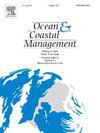From boom to decline: Spatio-temporal evolution and management of New Caledonia's sea cucumber fisheries
IF 5.4
2区 环境科学与生态学
Q1 OCEANOGRAPHY
引用次数: 0
Abstract
Sea cucumber fisheries worldwide have evolved considerably in response to market demands and effects of exploitation. Reports of overfishing abound yet studies have rarely examined the processes within the fishery systems and the efficacy of various management measures. New Caledonia is one of few Pacific Island territories/countries to have continued producing wild sea cucumbers without moratoria. We examined the changes in fishery production, fleet capacity and target species between the Northern and Southern Provinces’ sea cucumber fisheries over the past decades and the applied management measures. Capture production declined more than 70 % since the 1980s. Fishers sometimes harvested other resources on fishing trips, but often focussed on sea cucumbers, entailing 20 species. Landings and catch composition differed vastly between the two provinces and medium-value species were significantly targeted in recent years. Fleet capacity quadrupled over a few years, increasing pressure on the resource already declining in production. Underreporting by fishers of teatfish (Microthele) species following their listing on CITES Appendix II highlights difficulties in using quotas as a management tool. Minimum legal-size limits and a ban on compressed-air diving did not prevent decline but might have mitigated collapse of the fishery. Our study finds hyperstability through shifts in target species over time and resilience of some species to fishing pressure. We reveal that management imperatives might differ between fisheries within a country, requiring region-specific solutions. Constraining fleet capacity and numbers of fishers are ongoing challenges for sustaining small-scale, artisanal sea cucumber fisheries.
从繁荣到衰落:新喀里多尼亚海参渔业的时空演变与管理
世界范围内的海参渔业已经根据市场需求和开发的影响发生了很大的变化。关于过度捕捞的报告很多,但研究很少审查渔业系统内的进程和各种管理措施的效力。新喀里多尼亚是少数几个没有暂停生产野生海参的太平洋岛屿领土/国家之一。研究了近几十年来南北两省海参渔业产量、船队能力和目标品种的变化及其实施的管理措施。自20世纪80年代以来,捕集产量下降了70%以上。渔民有时会在捕鱼途中收获其他资源,但通常集中在海参上,涉及20种海参。两省间的渔获量和渔获组成差异很大,近年来以中等价值的鱼类为重点。几年来,船队的运力翻了两番,对已经在下降的油气资源造成了更大的压力。在《濒危野生动植物种国际贸易公约》附录II上列出茶鱼(微嘴鱼)后,渔民少报了这些物种的数量,这凸显了将配额作为管理工具的困难。法定的最小尺寸限制和禁止压缩空气潜水并没有阻止鱼类数量的下降,但可能减轻了渔业的崩溃。我们的研究发现,随着时间的推移,目标物种的变化以及一些物种对捕捞压力的适应能力会产生超稳定性。我们发现,一个国家内不同渔业的管理要求可能不同,需要有特定区域的解决方案。限制船队能力和渔民数量是维持小规模手工海参渔业的持续挑战。
本文章由计算机程序翻译,如有差异,请以英文原文为准。
求助全文
约1分钟内获得全文
求助全文
来源期刊

Ocean & Coastal Management
环境科学-海洋学
CiteScore
8.50
自引率
15.20%
发文量
321
审稿时长
60 days
期刊介绍:
Ocean & Coastal Management is the leading international journal dedicated to the study of all aspects of ocean and coastal management from the global to local levels.
We publish rigorously peer-reviewed manuscripts from all disciplines, and inter-/trans-disciplinary and co-designed research, but all submissions must make clear the relevance to management and/or governance issues relevant to the sustainable development and conservation of oceans and coasts.
Comparative studies (from sub-national to trans-national cases, and other management / policy arenas) are encouraged, as are studies that critically assess current management practices and governance approaches. Submissions involving robust analysis, development of theory, and improvement of management practice are especially welcome.
 求助内容:
求助内容: 应助结果提醒方式:
应助结果提醒方式:


